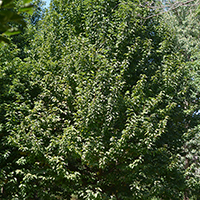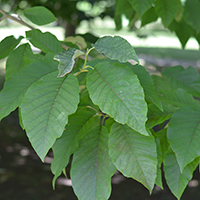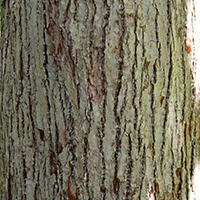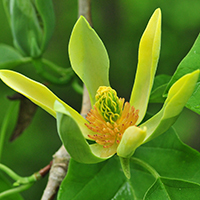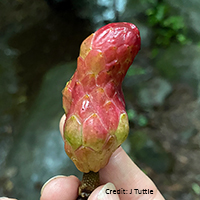What cucumber tree looks like
Size and shape
- Reaches 25 metres high.
- Trunk reaches up to 75 centimetres in diameter.
Leaves
- Green and elliptical with smooth edges (10 to 25 centimetres long).
Bark
- Grey-brown with scaly ridges.
Flowers
- Greenish-yellow flowers with petals 5 to 8 centimetres long.
- Large and shaped like an open bell.
- Bloom in early spring.
Fruit
- Green cones that turn bright red when mature (5 to 8 centimetres).
Where cucumber tree is found
Cucumber tree is a species at risk in Ontario and is found exclusively in Southern Ontario near Lake Erie.
Find out what we are doing to protect cucumber tree by reading the recovery strategy.
What you need to know to grow cucumber tree
- Moisture: requires moist to wet soils.
- Soil: grows best in rich, slightly acidic soils.
- Shade: requires full sun.
- Caution: despite the tree’s name, the fruit do not taste like cucumber and are not edible.
Benefits and uses of cucumber tree
Wildlife benefits
Cucumber tree fruits that fall to the ground are a food source for ground-feeding birds and small mammals. White-tailed deer will also eat young branches and buds.
Commercial use
Cucumber trees are one of the few magnolia species used as shade trees.
Fun facts about cucumber tree
- The cucumber tree is Canada’s only native magnolia species.
- Unripe cucumber tree fruit are green and cylindrical, like a cucumber, which is where the tree got its name.
- Beetles pollinate cucumber tree flowers.
Updated: November 22, 2023
Published: July 17, 2014
